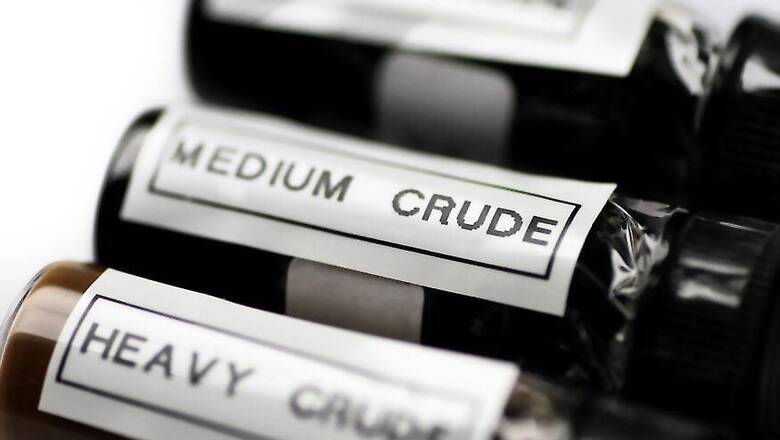
views
Mumbai: The continuing surge in crude prices, which has touched $70 per barrel-mark, the highest since December 2014, is likely to continue till March, impacting inflation, balance of payments and fiscal policy, says a report.
"The surging crude prices will put pressure on inflation, balance of payments and fiscal policy. We believe the rally is likely to continue till March for certain until the winter demand subsides and clarity is reached on the production plans in the US," Icra said in a note on Friday.
"Brent oil will remain range bound in the $65 region until there is more clarity on the US counter-move," it added. On November 31, 2016, the oil cartel Opec and non-Opec countries committed to cut down supplies by 1.8 million barrels a day till the end of 2018.
Brent crude doubled in the past one year and touched $70 a barrel mark on Thursday, the highest since December 2014. Brent was $32.1 a barrel in January 2016 and $64.1 in December 2017.
Since the start of this financial year particularly from June 2017 onwards, Brent has been on a rise due to the geopolitical tension within Opec and supply disruption caused by the cyclonic activity in the US. Since mid-July, Saudi, the largest producer pledged to lower crude oil exports.
Prices were also impacted by the rising tension between the Iraqi and Kurdish forces as the Kurdistan region pressed to hold an independence referendum.
"The only relief in the foreseeable future could be if US production picks up even more than its current level. Since the past two years, the US has been increasing production and exports. As per the International Energy Agency's latest data US production has been averaging 9.6 million barrels per day," the report said.
On the other hand, higher crude prices will increase price of natural gas which in turn will increase input cost for fertiliser and petrochemical companies that use fertilisers as a feedstock and increase the price of city gas distributors and power companies.
Worldwide crude demand is 96 million barrels a day and the country imports around 4.2 million barrels daily or 1,568 million barrels per annum, making it the third-largest consumer globally.
At this consumption level, a dollar increase in crude price on a permanent basis will increase the oil import bill by roughly Rs 10,000 crore per annum. Accordingly crude import
bill will rise by around USD 1.5 billion for every dollar increase in crude price, the report said.
Wholesale price inflation will be directly impacted as the pass-through of price increase will be automatic for most products.
"We estimate that WPI could rise by 0.5-0.7 percent on account of a 10 per cent increase in crude price, while the impact on retail inflation would be less pronounced given the lower weight of oil related products and can be in the region of 0.3-0.35 percent," it said.




















Comments
0 comment